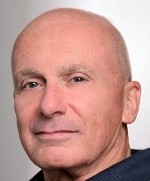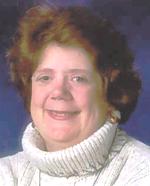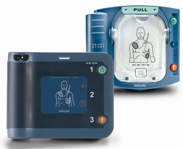A Survivor's Story
The Philips Healthcare emergency response team saved Joe Moscato's life July 22, using an AED in a real emergency for the first time. Only one responder that day had prior health care experience.
- By Jerry Laws
- Dec 01, 2009
Everything went right for Joe Moscato on July 22, which explains why he's alive to sing the praises of prepared emergency responders and high-quality automated external defibrillators. Moscato works for AED manufacturer Philips Healthcare, although he's learning products manager for the medical supplies group and not involved with its AED division. But if an AED hadn't been used to revive him July 22 when he collapsed in a hallway of his office building on the company's Andover, Mass., campus, things might have turned out much differently.
Moscato, who exercises frequently and plays on a championship seniors baseball team, said he had no warning a sudden cardiac arrest was imminent. He gets annual physicals and had taken a complete stress test about a year earlier that revealed no problems. His cholesterol was borderline but required no medication, Moscato's doctor said.
"Joe is a healthy-looking man in good physical shape. He's not obese, there's no sign of overweight, and he exercises regularly. You've got to make sure that's stressed in the article," said Kate Rochford, clinical specialist at Philips Healthcare and a registered nurse. A member of the company's emergency response team (ERT), she was in a meeting when an emergency audio page at 4:59 p.m. summoned her, giving her the exact location where Moscato lay.
'There Was No Warning'
"I was just lucky in a lot of different ways that day," Moscato said. He did his normal workout in the company's gym earlier than usual July 22 because three former teammates were visiting (Charles Moss from California, James Puckett from Florida, and Mike Dunn from Maine); the four planned to revisit Cooperstown, N.Y., for Hall of Fame Weekend later that week.
 "The last thing I remember about that day is toweling off in the locker room," Moscato said. Co-workers have told Moscato he went from the gym to his office and stopped at an ice machine as usual to get a cup of ice. He greeted a few people there, then dropped. "There was no warning, no pain, nothing. I don't remember any of it. . . . Again, from what everybody tells me, a lot of people rushed to my aid and took over from there. And within minutes, there was an AED by my side. I guess my heart had pretty much stopped beating," he said. "They got it going again, did everything they needed to do to get me going, and got me off to an emergency room in a hospital where they evaluated me and found I had a blockage, some plaque in one of the major arteries around my heart.
"The last thing I remember about that day is toweling off in the locker room," Moscato said. Co-workers have told Moscato he went from the gym to his office and stopped at an ice machine as usual to get a cup of ice. He greeted a few people there, then dropped. "There was no warning, no pain, nothing. I don't remember any of it. . . . Again, from what everybody tells me, a lot of people rushed to my aid and took over from there. And within minutes, there was an AED by my side. I guess my heart had pretty much stopped beating," he said. "They got it going again, did everything they needed to do to get me going, and got me off to an emergency room in a hospital where they evaluated me and found I had a blockage, some plaque in one of the major arteries around my heart.
"My cardiologist said the plaque ruptured -- and this all happened in the blink of an eye -- the plaque ruptured, blocked off blood flow in that major artery, the blood clotted at the same time because of the blockage, and I just went down."
Responders' Training Pays Off
Rochford, a former critical care nurse, said she reached the spot where Moscato had fallen two to three minutes after receiving the page. Another ERT member was opening Moscato's shirt. They opened Moscato's airway. A team member began chest compressions, Rochford began giving ventilations, and a third member fetched the AED and applied its pads to Moscato's chest.
 "I looked down, and I saw 'V fib.' I said, 'It's V fib, it's going to shock,' " Rochford said. "About a second later, it said, 'Shock advised.' As soon as the shock's done, we're back on his chest doing CPR and ventilations because, according to the AHA protocols, don't wait, just go back." Two minutes later, she advised the team to stop so the machine could reanalyze. It said, "no shock advised." Moscato then had a 140 systolic blood pressure and began breathing on his own, Rochford said. An outside ambulance team was en route, already aware the call was a cardiac arrest. By the time the EMTs arrived around 5:20 p.m., they had been alerted that Moscato had a pulse.
"I looked down, and I saw 'V fib.' I said, 'It's V fib, it's going to shock,' " Rochford said. "About a second later, it said, 'Shock advised.' As soon as the shock's done, we're back on his chest doing CPR and ventilations because, according to the AHA protocols, don't wait, just go back." Two minutes later, she advised the team to stop so the machine could reanalyze. It said, "no shock advised." Moscato then had a 140 systolic blood pressure and began breathing on his own, Rochford said. An outside ambulance team was en route, already aware the call was a cardiac arrest. By the time the EMTs arrived around 5:20 p.m., they had been alerted that Moscato had a pulse.
This trial by fire was the first use of an AED by the emergency response team. Rochford was the team leader that day; the other ERT members who responded have no health care experience, yet they knew what to do thanks to their training. Philips Healthcare has about 34 ERT members, but only three of them have health care backgrounds, she said. A former critical care nurse, she has worked for Philips Healthcare for 15 years and has been an ERT member for seven years. ERT members are volunteers who receive monthly training and a class every year on AEDs and emergency oxygen. Philips Healthcare offers BLS training to the workforce in general and, understandably, supports defibrillator and CPR training for all, Rochford said.
Still, Moscato said he knew little about SCA and heart attacks before experiencing his own. "In my view, that was something that happened to everybody else but would never happen to me," he said. "Since it happened, I've read a lot of articles about SCA. And from what I understand, it could happen to anybody at any time at any age. It's more common than I would have thought it was. I'm preaching to people now about exercise, and diet, and all of the things that can help to prevent SCA."
Philips created a moving video about the save that is available here.
'I'm One of the Very Lucky Ones'
Had he followed his normal routine that day, leaving the gym about 8:30 p.m., it's likely fewer people would have been around to witness his collapse and fewer ERT members would have been on campus to respond. "So not only did altering my schedule help, but it really helped because I did it when most of the ERT team members were here and could in fact save my life," he said..
 "From a lot of the articles I've read and talking to my own cardiologist, I'm one of the very lucky ones," Moscato added. "In many cases, in probably a larger percentage of cases, my understanding is people do not survive SCA. The fact that I was here at Philips, the fact that Philips has these trained ERT people available, the fact that Philips has the intervention equipment needed, and the fact that we did not have to wait for an ambulance to arrive to start that intervention: All of those factors not only saved my life, but another important thing out of that is that my cardiologist tells me that there was no heart damage because of the quick and correct intervention.
"From a lot of the articles I've read and talking to my own cardiologist, I'm one of the very lucky ones," Moscato added. "In many cases, in probably a larger percentage of cases, my understanding is people do not survive SCA. The fact that I was here at Philips, the fact that Philips has these trained ERT people available, the fact that Philips has the intervention equipment needed, and the fact that we did not have to wait for an ambulance to arrive to start that intervention: All of those factors not only saved my life, but another important thing out of that is that my cardiologist tells me that there was no heart damage because of the quick and correct intervention.
"You know, many of the people that do survive SCA have a much longer recovery time, and when they do recover, they have significant heart damage."
He said the cost of AEDs, which is an objection often cited by safety professionals whose companies don't deploy AEDs, should be kept in perspective.
"People will go out and spend more money than an AED costs on a flat-screen TV, just to be able to watch TV. I mean, this is a lifesaving device that needs to be available in an instant and without any notice, because that's what happens with SCA: There is no notice, there is no warning. So if anyone can afford the price of a TV, which most people have these days, they certainly can afford to go out and purchase an AED," Moscato said.